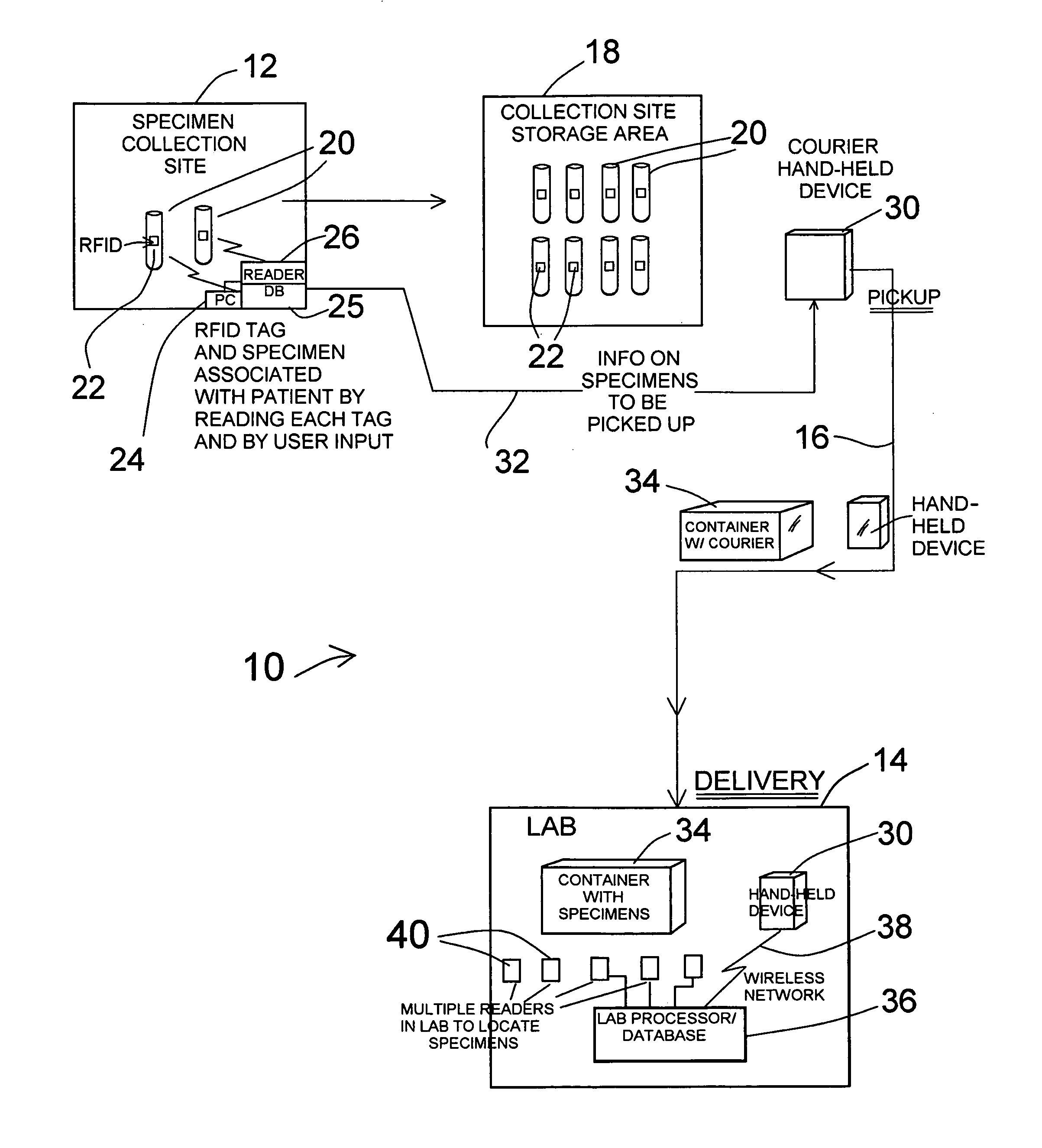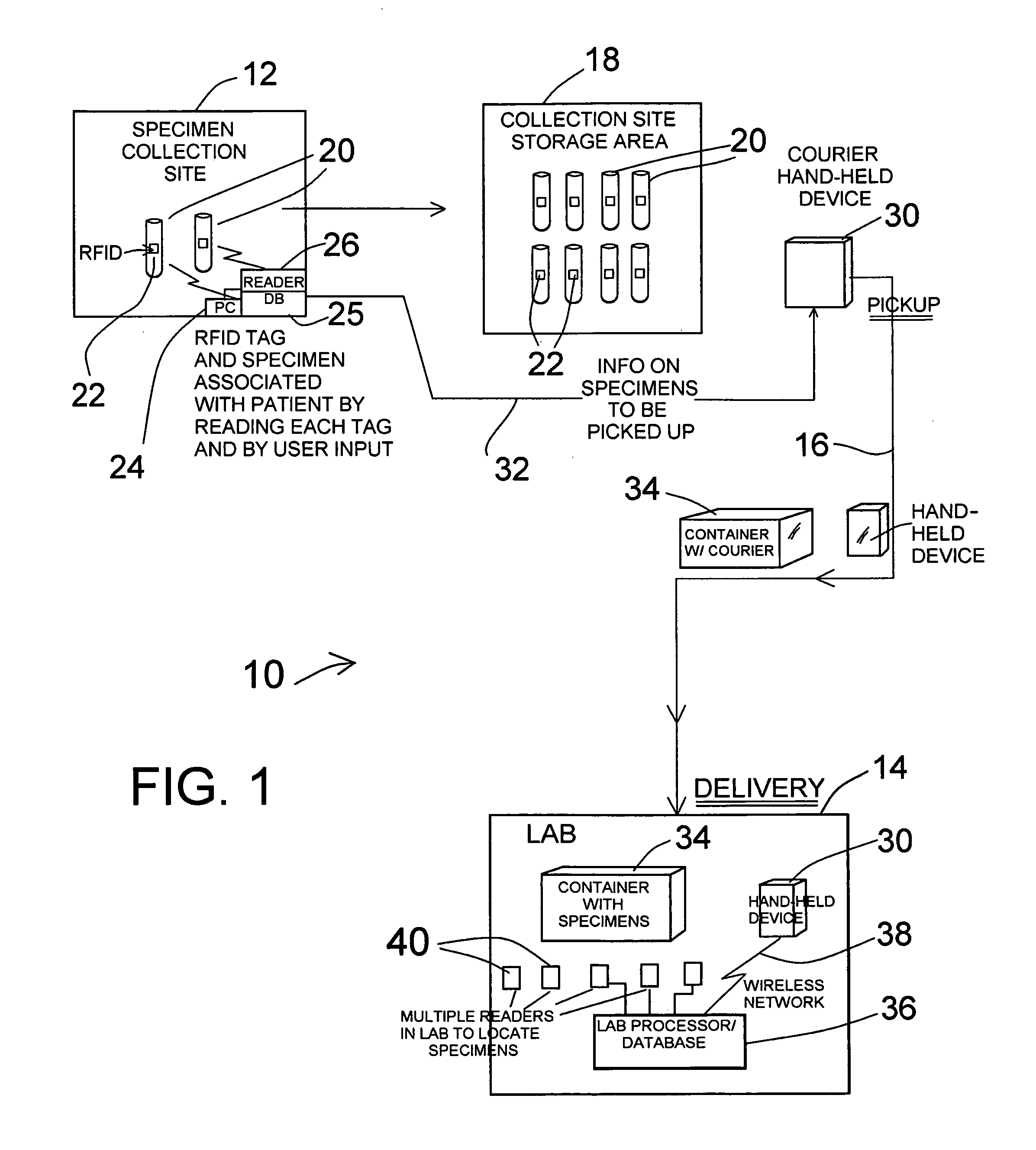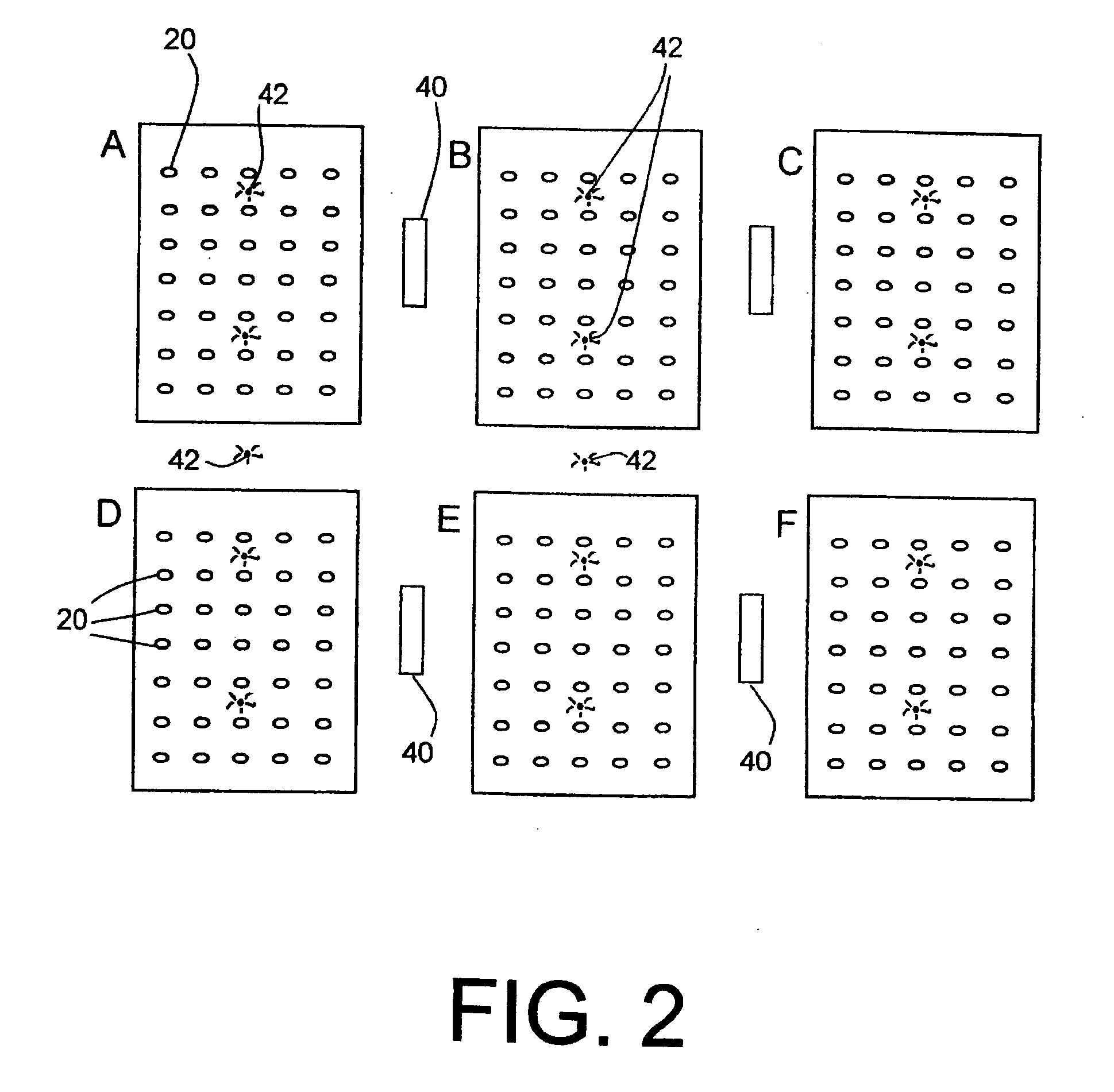RFID tracking of patient specimen samples
a patient specimen and tracking technology, applied in the field of medical laboratory testing and specimen handling, can solve the problems of difficult physical location of a particular sample among a large population of samples, limitation of the range in which could be read, and limitation of the cost effectiveness of the limitation system,
- Summary
- Abstract
- Description
- Claims
- Application Information
AI Technical Summary
Benefits of technology
Problems solved by technology
Method used
Image
Examples
Embodiment Construction
[0018]In the drawings, FIG. 1 shows schematically a specimen tracking system 10 which includes a specimen collection site 12 and a specimen testing laboratory 14 normally (but not necessarily) located remotely from the collection site. A transportation path from the collection site 12 to the laboratory 14 is shown at 16.
[0019]At the specimen collection site 12 a storage area 18 is included. Patient samples, such as blood, are collected in vessels 20, which can be the typical small tubes used for such purposes. Specimens are collected and placed in the collection site storage area 18, as indicated in this schematic illustration.
[0020]Pursuant to the invention a small RFID tag at 22 is secured to each specimen collection vessel 20. Immediately after each specimen is taken and enclosed in the vessel, the patient information for this particular specimen is associated with the RFID tag 22 on the vessel. For example, this may be done using a personal computer (PC) 24 at the collection sit...
PUM
 Login to View More
Login to View More Abstract
Description
Claims
Application Information
 Login to View More
Login to View More - R&D
- Intellectual Property
- Life Sciences
- Materials
- Tech Scout
- Unparalleled Data Quality
- Higher Quality Content
- 60% Fewer Hallucinations
Browse by: Latest US Patents, China's latest patents, Technical Efficacy Thesaurus, Application Domain, Technology Topic, Popular Technical Reports.
© 2025 PatSnap. All rights reserved.Legal|Privacy policy|Modern Slavery Act Transparency Statement|Sitemap|About US| Contact US: help@patsnap.com



